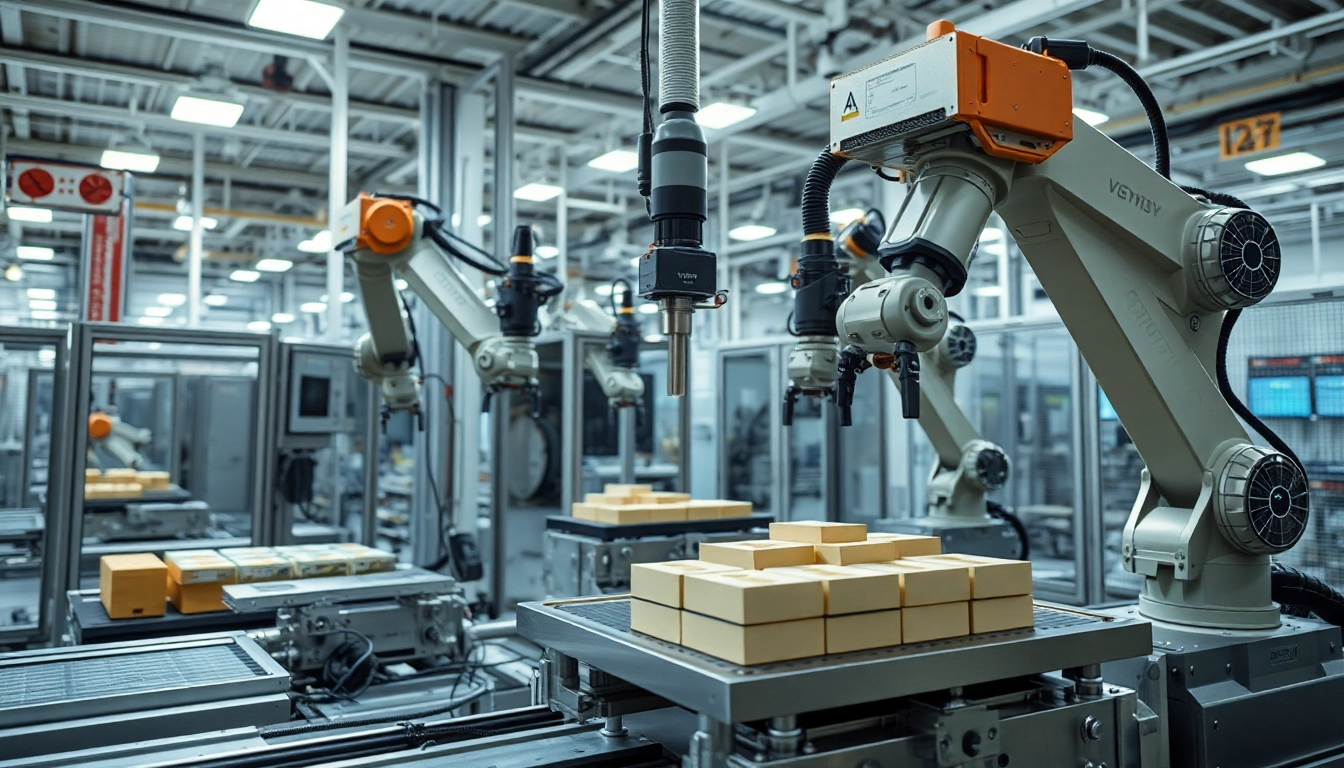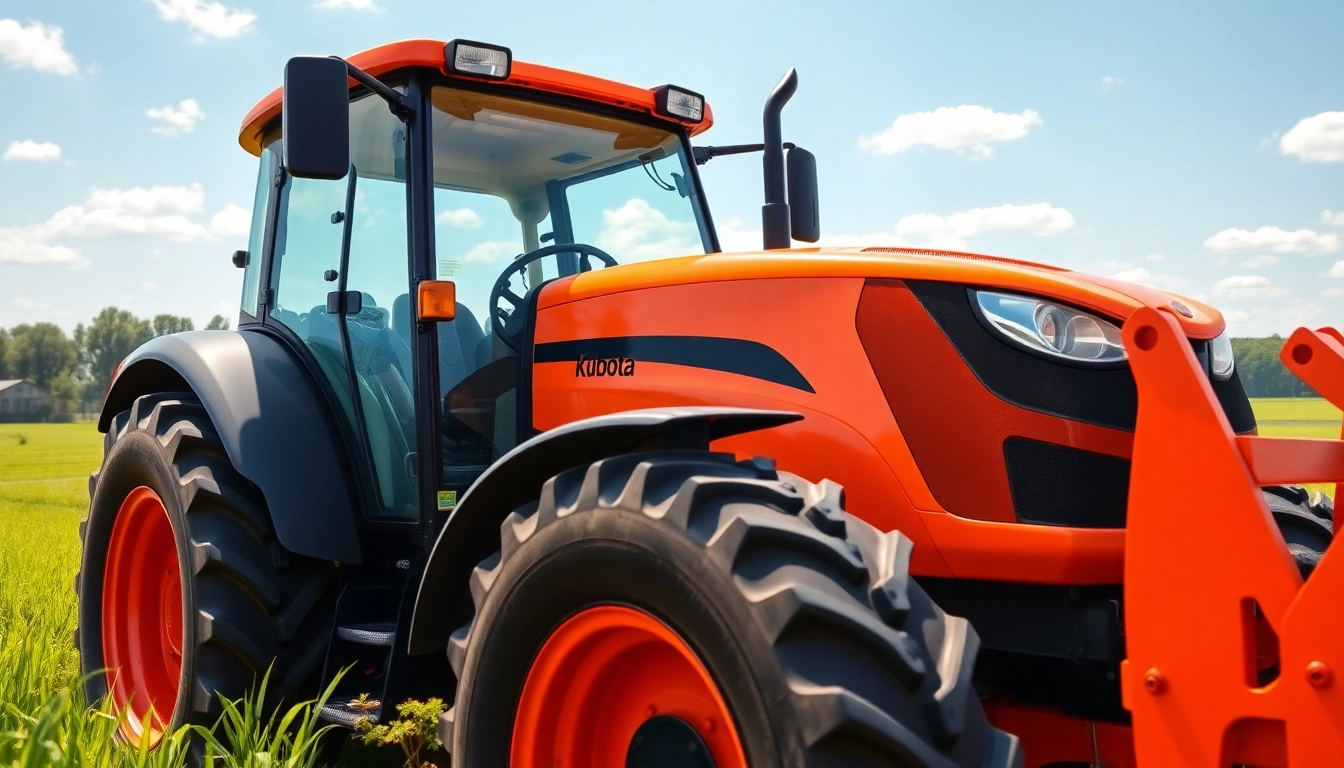1. Introduction to Machine Vision
Machine vision has become a cornerstone in the field of automation, fundamentally altering how industries operate by bringing enhanced efficiency and accuracy. This revolutionary technology enables machines to ‘see’ and analyze visual data much like humans do, allowing for automation of complex inspections and decisions in real-time. As industries increasingly rely on data-driven insights for operational improvement, the adoption of machine vision systems has surged, leading to significant advancements in manufacturing, logistics, and quality control.
1.1 What is Machine Vision?
Machine vision can be defined as the technology and methods that provide imaging-based automatic inspection, evaluation, and analysis for applications like quality inspection, robot guidance, and data extraction from images. It involves capturing visual data through cameras, processing this information using advanced algorithms, and enabling machines to interpret and make decisions based on what they observe. This integration of hardware and software is crucial for tasks that require precision and speed, such as identifying defects in products or guiding robotic arms in assembly lines.
1.2 Key Components of Machine Vision Systems
A modern machine vision system consists typically of several key components that work together seamlessly:
- Cameras: These devices capture images or video of the objects to be inspected.
- Lighting: Proper lighting is essential to improve image quality and ensure that the cameras capture the necessary details.
- Processing Unit: This includes hardware like CPUs or GPUs that run software algorithms to process captured images.
- Software: Machine vision software analyzes images, identifying patterns, defects, and other characteristics required for decision-making.
- Output Device: After analysis, results can be communicated through displays or integrated into other systems for automatic actions.
1.3 Importance in Industrial Automation
The significance of machine vision in industrial automation cannot be overstated. It allows for increased efficiency by minimizing human error, reducing downtime through quick inspections, and ultimately enhancing product quality. In fields such as electronics manufacturing, automotive assembly, and pharmaceuticals, the ability to detect minute defects that might escape human eyes is crucial. Moreover, the data collected through machine vision systems can be utilized for process optimization, providing companies with insightful analytics to improve their operations.
2. How Machine Vision Works
2.1 Image Capture Techniques
Image capture is the first step in any machine vision application. Various techniques can be employed, including:
- 2D Imaging: Uses standard cameras to capture flat images. This is suitable for most surface inspections.
- 3D Imaging: Utilizes technologies such as laser triangulation or structured light to capture depth information, necessary for complex parts.
- Hyperspectral Imaging: Captures data across various wavelengths of light, allowing for material identification and quality analysis.
The choice of technique depends on the application requirements, including the type of object, the necessary resolution, and the inspection speed required.
2.2 Processing and Analyzing Images
Once images are captured, they are processed using advanced software algorithms. This involves steps such as:
- Preprocessing: Enhancing image quality through noise reduction and contrast adjustment.
- Feature Extraction: Identifying key characteristics or patterns in the image that are relevant for analysis.
- Classification: Using machine learning models to categorize the objects based on extracted features.
Machine vision systems often employ deep learning techniques that significantly improve their ability to understand and interpret visual data, enabling more sophisticated applications and higher accuracy levels.
2.3 Integration with Other Technologies
Machine vision does not operate in isolation; it integrates smoothly with other technological systems:
- Robotics: Machine vision guides robotic arms, allowing them to accurately pick, place, and assemble products.
- Artificial Intelligence: AI can analyze massive amounts of visual data for predictive maintenance and anomaly detection.
- IoT (Internet of Things): Connected devices facilitate real-time data sharing, enhancing machine vision systems’ responsiveness.
This interoperability increases overall system efficiency and allows for the implementation of smart manufacturing concepts.
3. Common Applications of Machine Vision
3.1 Quality Control and Inspection
One of the most prevalent applications of machine vision is in quality control. It helps automate inspections in manufacturing processes by:
- Identifying defects in products at various stages of the production process.
- Ensuring that products adhere to industry specifications and standards.
- Logging inspection results for compliance and quality assurance documentation.
For instance, in the food industry, machine vision can inspect packaging for completeness and accuracy, thereby assuring consumers of product quality.
3.2 Assembly and Guidance Systems
Machine vision also plays a critical role in guiding robotic assembly processes. By using real-time feedback from cameras, systems can:
- Align components accurately during assembly.
- Adjust operation speed based on visual inputs to ensure precision.
- Detect any misalignment or errors instantly and correct them, thereby reducing wastage.
This application is particularly valuable in the automotive sector, where complex assembly tasks require high levels of accuracy.
3.3 Barcode Reading and Data Collection
Machine vision systems are also utilized extensively in barcode reading and inventory management:
- Scanning barcodes using high-speed cameras, allowing for quick and accurate data collection.
- Tracking product movement within warehouses and retail environments, enhancing inventory management processes.
- Integrating with ERP systems to streamline supply chain operations.
This capability allows for real-time data entry, minimizing manual effort and errors associated with inventory handling.
4. Comparing Machine Vision and Computer Vision
4.1 Defining the Differences
Though often used interchangeably, machine vision and computer vision have distinct differences:
- Machine Vision: Primarily focused on real-time inspections and measurements in industrial environments.
- Computer Vision: Encompasses the broader field of enabling computers to interpret and understand visual data from the world.
Machine vision is considered a subset of computer vision, geared towards specific tasks, particularly those in the manufacturing and automation practices.
4.2 Use Cases for Each Technology
Machine vision is extensively used for applications that require immediate output and high precision, such as:
- Product inspection for quality assurance.
- Guidance systems in robotic assembly lines.
- Automated data capture for inventory systems.
In contrast, computer vision has broader applications including:
- Facial recognition systems.
- Autonomous vehicles’ navigation systems.
- Healthcare imaging diagnostics.
These distinctions demonstrate how each technology can be applied effectively in varied contexts.
4.3 Future Developments and Innovations
The future of both machine vision and computer vision is promising, with numerous developments on the horizon:
- AI Integration: Enhanced AI algorithms will allow for better interpretation of complex data, improving decision-making processes.
- Advanced Imaging Techniques: Techniques such as 3D imaging and hyperspectral imaging will see increased application rates, allowing for better analysis and inspection capabilities.
- Edge Computing: Processing data closer to the source (e.g., on the device itself) will reduce latency and improve the efficiency of real-time operations.
As technology evolves, it will provide both challenges and opportunities for businesses willing to adapt and innovate.
5. Challenges and Future of Machine Vision
5.1 Technological Barriers and Solutions
Implementing machine vision systems can be fraught with challenges, including:
- High Initial Costs: The setup of a complete system can be expensive. Solutions include phased deployment and leveraging cloud-based services for initial testing.
- Complex Integrations: Integrating these systems with existing machinery can be challenging. Comprehensive training sessions for staff and hiring specialized personnel can mitigate this.
- Data Overload: Managing the large volumes of data generated requires effective data management strategies. Utilizing robust analytics tools can help extract actionable insights from the data.
By addressing these challenges proactively, businesses can more effectively leverage machine vision technology.
5.2 Trends Shaping the Future of Machine Vision
Several trends indicate where the industry is heading:
- AI and Machine Learning: As algorithms become more sophisticated, machine vision systems will be able to analyze images with greater accuracy and speed.
- The Rise of 3D Vision: Increased use of 3D imaging technologies for more complex inspections and analyses.
- Automation and Industry 4.0: The integration of machine vision with IoT and AI will drive automation, leading to smarter factories and supply chains.
These trends suggest an exciting future for machine vision, with continuous growth and innovation expected.
5.3 Implementing Machine Vision in a Business
Implementing machine vision technology in your business involves several crucial steps:
- Assess Need: Identify the tasks that could benefit from automation and visual inspection.
- Define Objectives: Establish clear goals for what you wish to achieve with the machine vision system.
- Select the Right Technology: Choose cameras, lighting, and software that meet the specific needs of the application.
- Pilot Test: Start with a pilot project to evaluate the effectiveness of the system before rolling it out at scale.
- Continuous Improvement: Regularly review system performance and update technology and techniques as needed.
Following these steps can help ensure a smooth transition to machine vision, maximizing the benefits of this technology.



